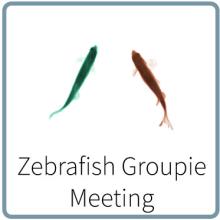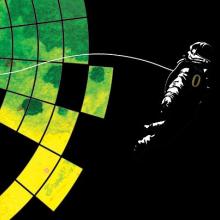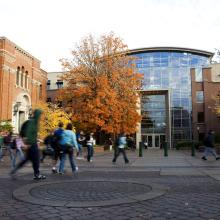Upcoming Events!
Past Events

Hi All,
Please save the date for our next NeuroDinner!
When: 6pm, Wednesday June 7th
Where...
Hi All,
Please save the date for our next NeuroDinner!
When: 6pm, Wednesday June 7th
Where: Gratitude Brewing, 540 E. 8th (formerly Sam Bond's Brewing, across from the Federal Bldg)
NeuroDinner is for the entire ION community, friends, and family. Lots of good food provided by Bill & Tim's, lots of excellent beverages provided by Gratitude Brewing (including plenty of non-alcholic options), and lots of great conversation with your fellow neuroscientists.
The theme will be "Psychedelic research in ION," featuring 3 short talks from trainees in 3 different labs studying the effects of DOI (a 5HT2A
hallucinogen) on neural activity and behavior in mice.
See you there,
-Mike


From biology.ucsd.edu
"My lab is interested in the flexibility of animal behavior, and understanding how nervous systems can adapt to different environmental, internal, and social contexts. We focus on the neurobiology of global brain states in individuals and collective decision making in groups, leveraging the unique advantages of two model systems – the juvenile zebrafish (Danio rerio) and adult glassfish (Danionella translucida).
We investigate internal states in juvenile zebrafish, by observing the behavior of these small transparent vertebrates across different internal states: sleepy vs. alert, hungry vs. sated, stressed vs. calm, etc. We use cellular-level optical imaging and manipulation of neural dynamics and biochemical signaling across the entire brain of these animals during state-dependent behaviors, in order to understand how multiple cellular changes across the brain produce global internal states, with a focus on neuromodulatory signaling pathways.
We also investigate group behaviors in the micro glassfish (Danionella translucida) – a species that remains small and transparent as adults and are capable of robust collective social behaviors. We engage these fish in interactive multi-agent virtual reality environments in order to understand how multiple individual brains collaborate to perform collective behaviors, with a focus on information sharing during anti-predator adaptations and consensus decision-making."



Hello ION!
Next month the ION DEI committee will host "Rehearsals for Life", a grad student led...
Hello ION!
Next month the ION DEI committee will host "Rehearsals for Life", a grad student led group that provides interactive workshops on addressing difficult situations, based on scenarios that they act out, together with audience participation and discussion. These scenarios incorporate issues including confronting inappropriate behavior, handling power dynamics, and building positive interactions in diverse groups. I attended one of their workshops before the pandemic, and it was a very powerful and valuable experience.
The workshop is open to everyone in ION - students, postdocs, faculty, and staff - and in fact is designed to explore interactions across these different groups as well as different cultural backgrounds, gender, etc.
Tuesday, May 23
3:30-5:00pm
Lawrence 166 (new location! map.uoregon.edu)
We hope to see you there!
Cris


Abstract: Neural representations of sensory stimuli are modulated by a variety of contextual factors...
Abstract: Neural representations of sensory stimuli are modulated by a variety of contextual factors, such as information on other stimuli present in the environment, the novelty or familiarity of the sensory inputs, and behavioral goals. Despite decades of attention in systems neuroscience, many questions persist regarding how sensory codes adapt to these different variables. Here, we study this problem in the olfactory system, which combines the advantages of being highly compact, allowing us to develop solvable theoretical models, and highly conserved, allowing us to derive general principles that are testable in relatively simple animal models (such as the locust or the fly) but are widely applicable across animal species, from insects to vertebrates. Our approach is based on the information-theoretic premise that optimal codes strive to maximize the overall entropy (decodability) of neural representations while minimizing neural costs. A novel feature of our theory is that it incorporates contextual feedback: this allows us to predict how optimal odor representations are modulated by top-down signals that represent the overall multi-sensory environment. We also show that the emerging optimal solutions can be implemented at the level of neural circuits through neuroplasticity. This result reconnects our theoretical findings to biologically plausible processes, thus bridging normative and mechanistic levels of analysis. Our theory is generalizable to other sensory systems and establishes a conceptual foundation for studying sensory coding associated with behavior.

